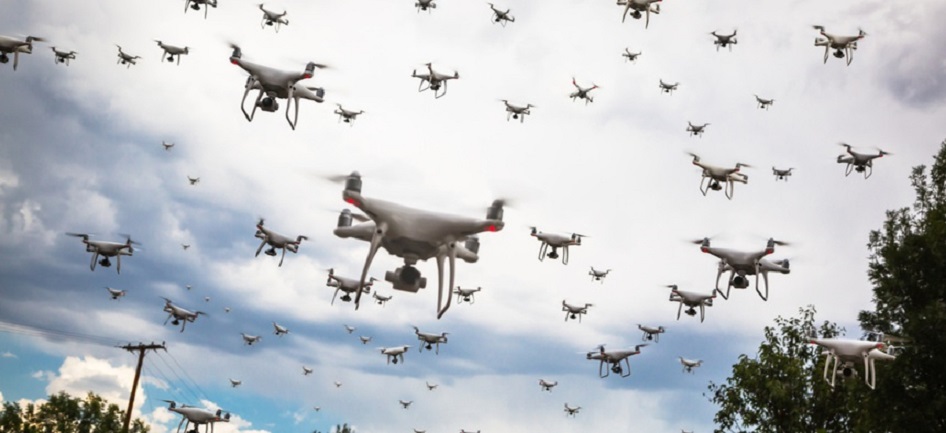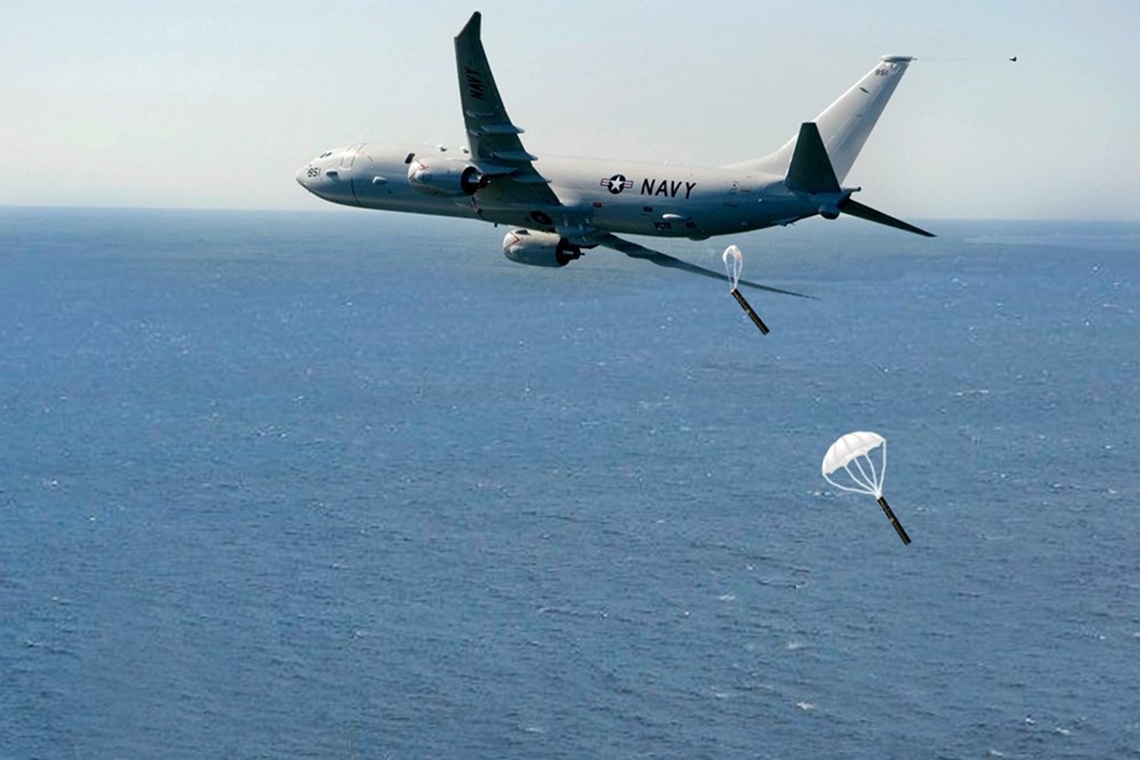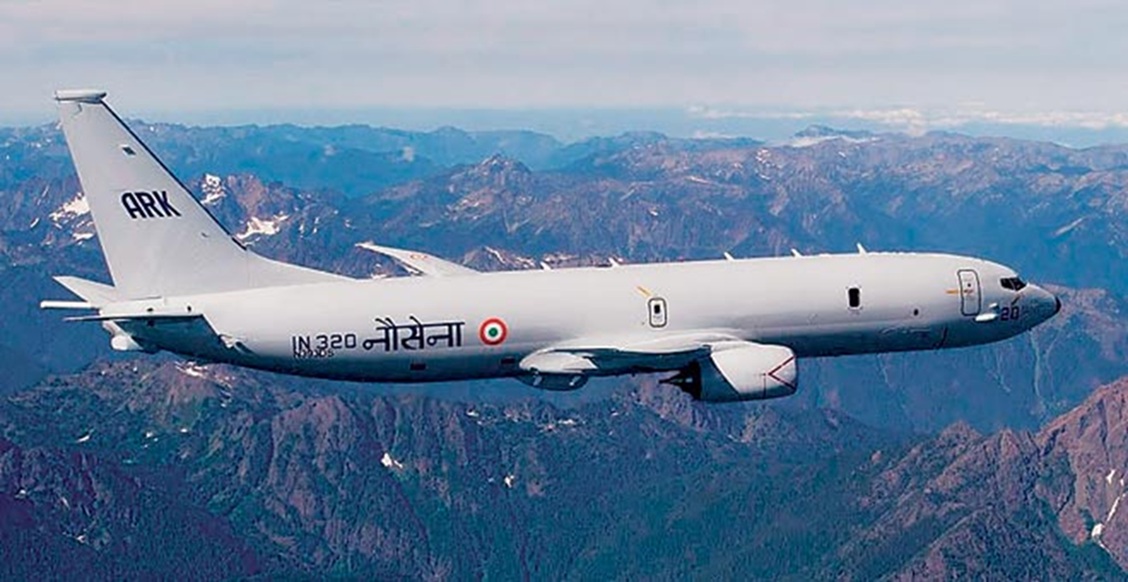Autonomous systems, especially unmanned aerial vehicles, have seen engagements ranging from covert surveillance operations to active warzone operations in recent times. With technological developments in computation modules and communication systems, we are quickly moving towards the notion of networked autonomous agents, colloquially also known as swarming.
Swarming as a strategy in military affairs is quite ancient, but with advances in technology, it is possible to build autonomous agents to mimic such behaviour. Due to the relative recency in the technological breakthroughs that enable swarming, India stands a great chance to develop self-reliance in this domain and use it to her advantage. It is therefore essential for our security agencies and engineers to collaborate in achieving this goal. This article outlines the advantages that swarming, or cooperative behaviour offers, a few examples of the sort of work that is being done by Indian academia and offers some personal views on how to move ahead to achieve self-reliance.
Swarming as a military doctrine and the role that intelligent agents will play in future conflicts has been well studied [Edw05, Arq00] in the US. Similar studies, for example [Pan20], to understand how swarming could be useful in the Indian context by military experts, would serve as a guideline to engineers in their development efforts. It is also prudent to have a thorough understanding of our neighbours’ developments in this domain [Nar18]. On the technical front, research in swarming took off with Reynolds’ description of the motion of flocks of birds, or herds of animals, or schools of fish as computer animations [Rey87]. Since then, computer scientists and control theorists have been working on algorithms to achieve cooperation between artificial agents. A branch of this study is known as multi-agent systems (MAS) [Ren08]. This branch draws from knowledge in graph theory, control theory and optimization to study and develop algorithms for cooperative behaviours.
Multi-agent systems (MAS) are capable of performing various tasks [Ros18]. These tasks can be categorized into the following classes:
- Spatial assembly: Agents coordinate to achieve specific spatial configurations, but have negligible interaction with the environment. These tasks can be subdivided into:
- Aggregation: agents converge onto one location
- Pattern formation: agents arrange themselves into formations
- Coverage: agents cover an area of interest
- Collective exploration: Agents interact with the environment but have minimal interactions with each other. These tasks can be subdivided into:
- Area exploration: agents explore an area for mapping or surveillance
- Goal searching: agents search for specific targets
- Cooperative decision making: Agents coordinate between themselves and interact with the environment to achieve complex tasks. These tasks can be subdivided into:
- Task allocation: tasks are distributed amongst agents based on various parameters
- Collective transport: agents coordinate to transport heavy payloads
- Motion planning: agents collaborate to find paths in cluttered environments
- Distributed estimation: the state of one or multiple targets can be estimated using data from multiple agents.
Military missions are typically designed over several phases, each comprising tactics and plays that various units perform. The aforementioned tasks that the MAS can perform, need to be embedded into these military tactics and plays. This embedding is critical to leveraging the true power of multi-agent systems. Hence, a strong open collaboration with our internal security forces is essential. Inputs from officers with ground experience would help in designing practical missions, with MAS providing tactical advantages.
In recent years, a lot of effort has been put into realizing state-of-the-art multi-agent systems in India. Several testbeds have been designed to demonstrate cooperative behaviour through various tasks. In [Jos19], a testbed was created to demonstrate the task of aggregation in outdoor environments. The agents communicated with each other using a real-time communication protocol and reached consensus regarding the location of rendezvous, without centralized command or control. Novel algorithms to demonstrate formation flight and rogue agent capture in minimum time were also tested. Various demonstrations of the task of coverage have been covered in [Bor19]. As an extension of this work, we are now capable of demonstrating complicated missions wherein a group of agents take off from a home location and navigate to an area of interest to set up a surveillance network. The agents optimally cover this area of interest and also perform the task of goal searching. Once the goal/target is found, the agents form patterns around the target to gather more intelligence and relay it back to central command for further action.
These demonstrations have enabled us to understand areas that need further work. One critical area, which needs collaboration with security forces is that of human-swarm interaction. MAS operates on high-level commands from humans and generate a lot of sensory data. This data is analysed by a central command centre. The data is also useful for system health monitoring and taking decisions on a tactical level. Development of information flows and interfaces could be made end-user ready with their inputs at the design and demonstration stage. On the technical side, mission composability and provability of safe operations is a challenge we are working on. A multi-agent system is a system of systems. Hence stability and performance guarantees need to be ensured for successful operation.
As we move towards self-reliance in technology for swarms, it is essential that engineers and security forces collaborate. Together, technology demonstrators need to be designed based on specific use cases, current technological limitations and financial constraints. One good step in this direction was the recent Meher Baba challenge by the IAF. More such nuanced demonstrations need to be planned and executed.
A few startups are doing good work in this area. Mentorship from the security experts would help us design better systems. As an engineer, I look forward to interacting with our security agencies and welcome constructive feedback for achieving this common goal for our nation.
Title image courtesy:https://www.nextgov.com
Disclaimer: The views and opinions expressed by the author do not necessarily reflect the views of the Government of India and Defence Research and Studies.
References:
[Edw05] Edwards, Sean J. Swarming and the Future of Warfare. RAND Corp Santa Monica CA, 2005.
[Arq00] Arquilla, John, and David Ronfeldt. Swarming and the Future of Conflict. No. RAND/D8-311-OSD. RAND Corp Santa Monica CA, 2000.
[Pan20] Pant, Atul. Aerial Drones In Future Wars: A Conceptual Perspective. Occasional Paper. Manohar Parrikar Institute for Defence Studies and Analyses, 2020.
[Nar18] Narang RK. UAV Swarms: China’s Leap In Cutting-edge Technologies. Air Power Journal Vol. 13 No. 3, Monsoon 2018 (July-September) pp. 59-81.
[Rey87] Reynolds, Craig W. “Flocks, herds and schools: A distributed behavioral model.” Proceedings of the 14th annual conference on Computer graphics and interactive techniques. 1987.
[Ren08] Ren, Wei, and Randal W. Beard. Distributed consensus in multi-vehicle cooperative control. Vol. 27. No. 2. London: Springer London, 2008.
[Ros18] Rossi, Federico, et al. “Review of multi-agent algorithms for collective behavior: a structural taxonomy.” IFAC-PapersOnLine 51.12 (2018): 112-117.
[Jos19] Joshi, Apurva. Experiments in modelling and control of multi-agent systems. Ph.D. Thesis, IIT Bombay, Monash University, 2019.
[Bor19] Borkar, Aseem. Surveillance and Monitoring Strategies for Autonomous Mobile Agents. Ph.D. Thesis, IIT Bombay, 2019.








